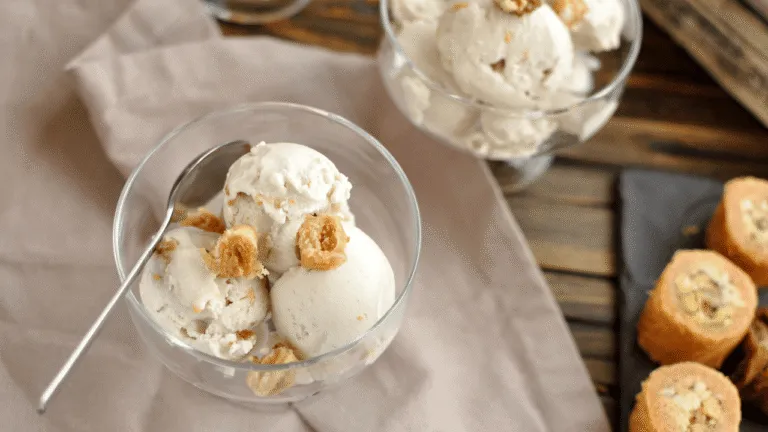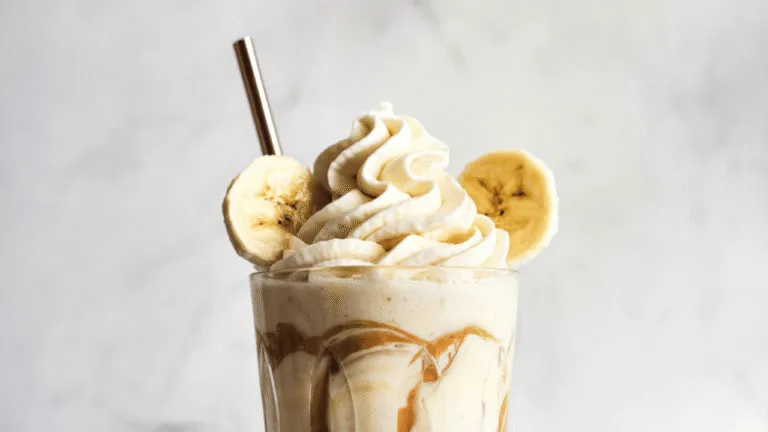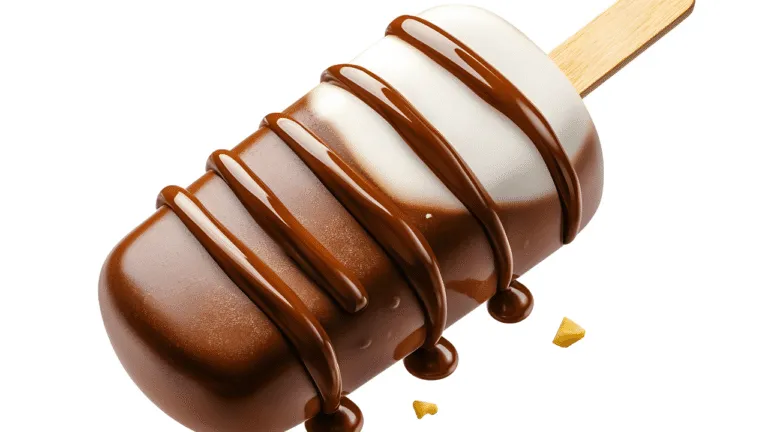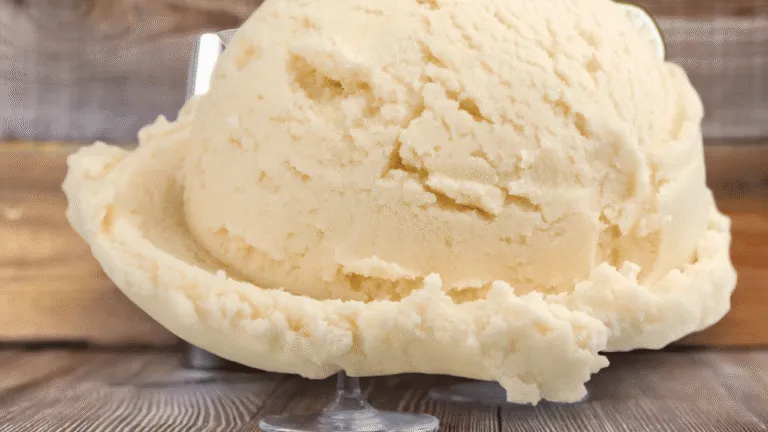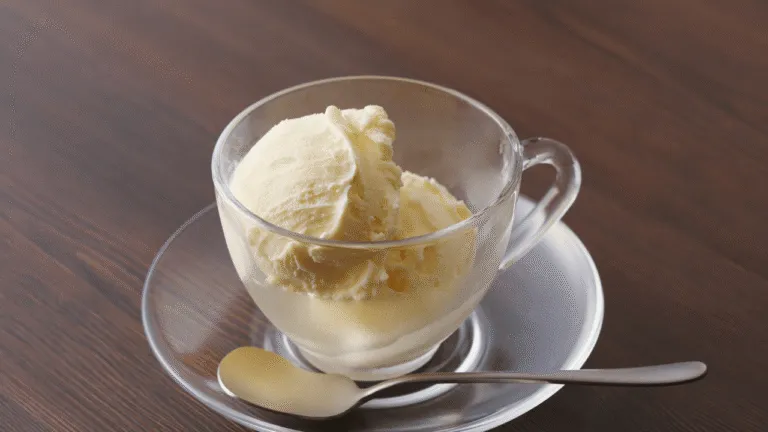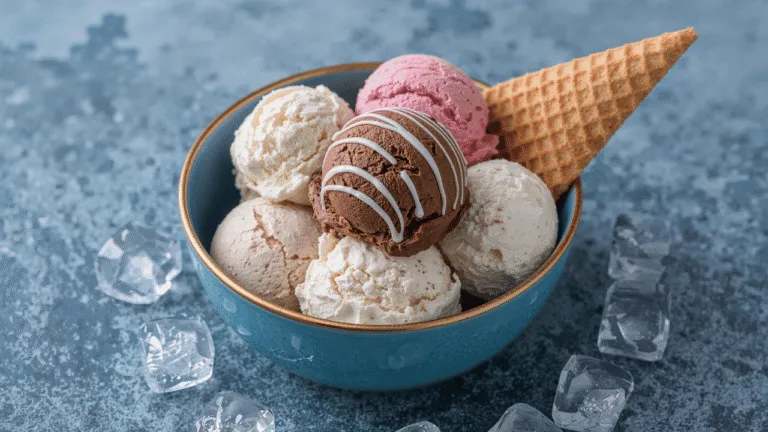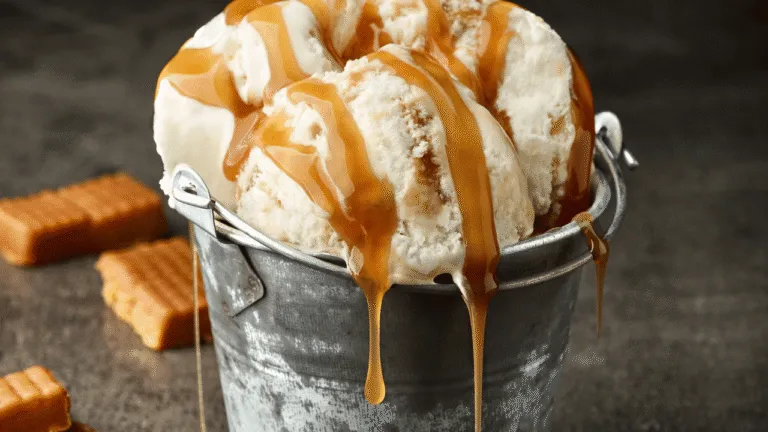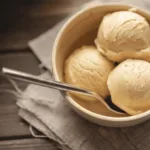Make a bright, herbal mixer at home with just sugar, water, and fresh sprigs. This classic 1:1 method heats equal parts until the sugar dissolves, then you steep for 10–60 minutes to pull out a clear, vibrant herb flavor.
We’ll keep things clean and fast. Strain thoroughly so cold drinks stay clear, and expect about 1.5 cups from 1 cup sugar plus 1 cup water. Store chilled in a sterile, airtight container for 1–2 weeks; cloudiness means it’s time to refresh.
For longer fridge life add about 1/2 ounce vodka, or freeze in 1-ounce cubes for up to three months. Use 1/2 to 1 ounce per drink to brighten cocktails, spritzes, desserts, or fruit. Choose fresh, bright-green sprigs for the best herbal lift and a silky mouthfeel.
Key Takeaways
- Rosemary Simple Syrup Recipe.
- Classic 1:1 method—equal sugar and water, then infuse.
- Steep 10–60 minutes for a clean, vibrant herb flavor.
- Yield ~1.5 cups; refrigerate 1–2 weeks or freeze in cubes.
- Add 1/2 oz vodka to extend fridge life safely.
- Use 1/2–1 oz per drink to balance sweetness and herbal notes.
Why This Rosemary Simple Syrup Belongs in Your Home Bar
Homemade syrup turns a handful of fresh herbs and pantry sugar into a bar tool that actually gets used. It’s economical, preservative-free, and beginner friendly. Keep a bottle chilled and you’ll save money and time compared with store-bought options.
Inspiration: Elevate cocktails, mocktails, and desserts
One pour changes everything. Add 1/2 to 1 ounce per drink to brighten cocktails or sparkling mocktails. The infusion pairs beautifully with gin, bourbon, tequila, and vodka, and it also lifts lemonade, iced tea, and coffee drinks for parties or quiet nights.
What to expect: Flavor, versatility, and ease
- Bright herbal flavor that complements citrus, ginger, and warm spices.
- Make-ahead convenience — pre-batch for holidays and gatherings so mixing is fast.
- Many ways to use it: brush on cakes, sweeten parfaits, or stir into cold brews and fruit.
“A single jar will add professional polish to drinks and desserts with almost no effort.”
What Is Simple Syrup and How Rosemary Transforms It
A basic syrup starts with two pantry staples—sugar and water—joined with gentle heat to make a uniform sweetener. This liquid sweetener, often called simple syrup, uses equal parts sugar and water for the classic 1:1 base most drinks call for.
Classic vs. rich: use 1:1 for everyday cocktails and 2:1 parts (rich) when you want a thicker, sweeter finish. Rich batches add body and cling to glass rims.
Heating is key. Gentle heat melts sugar so the sugar dissolves fully and you avoid grit in cold drinks. Muddling fresh herbs often leaves bits behind; heating gives a clear water sugar solution that mixes instantly.
- Infuse with fresh rosemary sprigs off the boil, then steep 10–60 minutes to taste.
- The herb’s oils add aromatic depth without bitterness when you strain properly.
- A uniform syrup blends cleanly into shaken, stirred, or built drinks.
For practical how-to steps and a tested method, see this detailed guide on making herb-infused syrup at home: rosemary simple syrup guide.
“Start classic, taste, and adjust steep time until the herbal lift fits your glass.”
rosemary simple syrup recipe
This quick method turns pantry staples and fresh herbs into a bright, bar-ready mixer in under an hour.
Combine 1 cup white sugar, 1 cup water, and 4–5 fresh sprigs in a small or heavy-bottomed saucepan. Bring the mixture to a boil, stirring until the sugar dissolves. Turn off the heat and let it steep for 15–60 minutes, tasting every few minutes to find the right strength.
Prep and time overview
- Active minutes: Minimal — dissolve, steep, strain.
- Base parts: Use a 1:1 ratio (1 cup each) to yield about 1.5 cups.
- Heat tip: Bring to a boil, then remove from heat so the herb infuses without bitterness.
- Storage: Strain through a fine-mesh sieve, cool completely, then transfer to a sterile, airtight container and refrigerate.
- Make-ahead: Add ~1/2 oz vodka after cooling to extend fridge life while keeping clarity.
Expect bright, woodsy flavors that lift cocktails and desserts; use 1/2–1 oz per drink.
Creamy Vanilla Ice Cream
4
servings30
minutes40
minutes300
kcal1
hour10
minutesA simple homemade vanilla ice cream recipe with everyday ingredients.
Keep the screen of your device on
Ingredients
2 cups 2 heavy cream
1 cup 1 whole milk
3/4 cup 3/4 granulated sugar
1 tablespoon 1 pure vanilla extract
1/8 teaspoon 1/8 salt
Directions
- In a medium mixing bowl, whisk together the heavy cream, whole milk, granulated sugar, pure vanilla extract, and salt until the sugar is completely dissolved.
- Cover the bowl with plastic wrap and refrigerate the mixture for at least 2 hours, or until thoroughly chilled.
- Once chilled, pour the ice cream mixture into your ice cream maker and churn according to the manufacturer's instructions, typically 20-25 minutes.
- After churning, transfer the ice cream to an airtight container. Cover the surface with plastic wrap and seal the container tightly.
- Freeze the ice cream for an additional 2 hours to firm up before serving for the best texture.
Recipe Video
Nutrition Facts
- Serving Size: 0g
- Total number of serves: 8
- Calories: 260kcal
- Fat: 18g
- Saturated Fat: 11g
- Trans Fat: 0.5g
- Polyunsaturated Fat: 0.5g
- Monounsaturated Fat: 5g
- Cholesterol: 70mg
- Sodium: 40mg
- Potassium: 100mg
- Carbohydrates: 21g
- Fiber: 0g
- Sugar: 21g
- Protein: 2g
- Vitamin A: 15IU
- Vitamin C: 0mg
- Calcium: 6mg
- Iron: 0mg
- Vitamin D: 0mg
- Vitamin E: 0mg
- Vitamin K: 1mg
- Thiamin: 0mg
- Riboflavin: 0mg
- Niacin: 0mg
- Vitamin B6: 0mg
- Vitamin B12: 0mg
- Folate: 0mg
- Biotin: 0mg
- Pantothenic Acid: 0mg
- Phosphorus: 0mg
- Iodine: 0mg
- Magnesium: 0mg
- Zinc: 0mg
- Selenium: 0mg
- Copper: 0mg
- Manganese: 0mg
- Chromium: 0mg
- Molybdenum: 0mg
- Chloride: 0mg
Did you make this recipe?
Tag @https://www.instagram.com/ice_cream_haven/ on Instagram and hashtag it with #IceCreamIceCreamHavens
Like this recipe?
Follow @https://www.pinterest.com/Ice_Cream_Haven/ on Pinterest
Join our Facebook Group!
Follow https://www.facebook.com/icecreamhavens/ on Facebook
Ingredients and Equipment You’ll Need
Start by lining up fresh ingredients and sturdy gear to keep the process smooth. A tidy station saves time and helps you move quickly from boil to cool without extra mess.
Core ingredients
Standard batch: measure 1 cup sugar, 1 cup water, and 4–5 fresh rosemary sprigs for a balanced infusion.
- Choose bright-green sprigs—avoid dried for the best herbal lift.
- Use consistent measuring cups so each cup yields a repeatable batch.
Essential tools
- A small, heavy-bottomed saucepan gives even heat and prevents scorching.
- A whisk helps dissolve sugar, and a fine-mesh sieve ensures a clear final syrup.
- Transfer to a sterile airtight container or jar once cooled to keep flavors fresh.
Optional gear
- A squeeze bottle or mason jar speeds pouring and storage.
- A small funnel prevents sticky spills when you fill your container.
Mise en place: keep all tools and ingredients nearby. This simple prep keeps the process calm and efficient so your herb infusion turns out bright every time.
Step-by-Step: From Sugar Water to Rosemary Syrup
Follow these short, confident steps to turn pantry staples into a bright, herb-forward mixer. Work with clear measurements and a calm stove to protect delicate aromas.
Combine and heat
Start with equal parts water and sugar in a small saucepan and add 4–5 fresh rosemary sprigs. Warm over medium heat until the mixture comes to a simmer.
Bring to a boil and dissolve
Raise the heat briefly to bring the liquid to a gentle boil, stirring until the sugar dissolves and the solution looks clear. Once the sugar dissolves, turn off the heat to protect the herb oils.
Steep, strain, and cool
Let the mixture steep for 10–60 minutes, tasting as you go—minutes matter when dialing intensity. Strain through a fine-mesh sieve to remove sprigs and any flecks.
- Cool fully before bottling to avoid condensation.
- For more punch, add another sprig or extend steep time by 10-minute increments.
- Prefer a whisper of herb? Cap the steep at about 10–15 minutes.
- Label your bottle with the date and steep minutes so you can repeat the result.
Pro Tips for Big, Bright Rosemary Flavor
Bright, perky sprigs are the foundation of any batch that sings with herbal lift. Use only fresh rosemary that looks lively and green; limp or woody stems give muted, resinous notes.
Steeping matters. Treat steep time like seasoning: short minutes yield a gentle touch, while longer minutes produce a bold, woodsy flavor. Taste at 10-minute intervals and note your preferred window.
Practical heat and handling tips
Bring the mix to a brief boil, then cut the heat immediately so the oils stay bright. Keep an eye on the pot—sugar water heats fast and can surge if you step away.
Clean transfers and storage
Strain thoroughly and bottle in a clean container to preserve clarity and freshness. A squeeze bottle gives precise pours when building drinks or decorating desserts.
- Always start with fresh rosemary that’s bright and perky; this is where vivid rosemary flavor begins.
- Treat steep time like seasoning—shorter minutes for subtlety, longer for bold depth.
- Bring to a brief boil, then immediately cut heat so aromatics stay lively.
- Keep an eye on the pot; sugar water reaches a boil quickly and can surge if unattended.
- Strain thoroughly and bottle in a clean container to preserve clarity and freshness.
- Use a squeeze bottle for precision when building drinks and decorating desserts.
- A small funnel keeps transfers tidy and minimizes waste.
“Note your preferred window so future batches land exactly where you love them.”
Flavor Variations and Creative Infusions
A single base method unlocks dozens of flavor directions with just a few pantry swaps. Use the same dissolve-then-steep approach and you can pivot from bright to cozy in minutes.
Herbal swaps
Try basil, mint, sage, or thyme for seasonal twists. Each herb gives a different aromatic profile, so taste at short intervals to find your sweet spot.
Warm spice and citrus riffs
Add cinnamon sticks or fresh ginger to warm the base. For pop, stir in lemon zest or a splash of juice after you remove from heat.
Deeper sweeteners and fruit pairings
Substitute brown sugar or honey as a different sweetener to change color and body. Pair herbs with fruits like grapefruit or pear for elegant spritzes and lemonade-style highballs.
- Always dissolve sugar in water, remove from heat, then add botanicals.
- Taste as you go; extraction rates vary by herb and fruit.
- Use variations to tailor cocktails, tonics, and desserts and keep notes so your favorite combinations are repeatable.
“Small swaps make big signature moments behind the bar.”
How to Use Rosemary Simple Syrup in Drinks and Desserts
A little of this infused syrup transforms everyday drinks into memorable pours. Keep a labeled bottle in the fridge so you can finish cocktails and desserts fast. Use 1/2 to 1 ounce per drink for balanced sweetness and herbal lift.
Signature pours: add a splash to gin and tonic, a bubbly French 76, margaritas, Moscow mules, bourbon-forward cocktails, or a bright gimlet. Shake a grapefruit-rosemary gimlet or lemon-forward bourbon cocktail for house-worthy results.
- Add 1/2–1 ounce to classic cocktail builds to round flavor and add aroma.
- For alcohol-free sippers, top with club soda or tonic; it also wakes up lemonade and iced tea.
- Brush cake layers with syrup to lock moisture before frosting; swirl into yogurt or oatmeal.
- Spoon over poached fruits or vanilla ice cream for a quick, restaurant-style finish.
- Gift small mason jars—homemade bottles make thoughtful presents and prompt new recipes at home.
Pro tip: Keep one jar handy so you can swap it for plain simple syrup in cocktails, mocktails, and baking for instant herbal brightness.
Make-Ahead, Storage, and Freezing
Plan your batches ahead so chilled bottles are ready when guests arrive. Store your rosemary simple syrup in a clean, sterile bottle and label it with the date and any tweaks. This saves time and keeps service smooth.
Refrigeration
Keep it cold. Transfer cooled syrup to an airtight container or jar and refrigerate. Expect peak quality for 1–2 weeks; discard if the liquid turns cloudy or smells off.
Freezing
Portion into 1‑ounce cubes for up to 3 months. Freeze on a covered tray, then move cubes to a labeled container or freezer bag. Cubes speed measuring for cocktails and desserts.
Preservation boost
A small splash (~1/2 oz) of neutral vodka can extend refrigerated life without changing flavor much. Keep storage notes on the label—date made, additions, and any special instructions.
- Make ahead: chill fully before storing.
- Shelf life: 1–2 weeks refrigerated; up to 3 months frozen.
- Quick tip: the syrup contains almost zero fat and about 64 calories per ounce, so track servings in your notes.
“When in doubt, trust your senses and the calendar to keep syrups at their best.”
Substitutions, Dietary Tweaks, and Canning Note
If you need lower sugar, swap in a packaged sweetener and follow the maker’s conversion chart. This keeps the same dissolve-and-steep method so texture stays smooth in cold beverages.
Honey swap: Use honey at a 1:1 ratio with sugar for a warmer, floral note that pairs well with citrus and whiskey. Expect a deeper color and a silkier mouthfeel when you choose honey or brown sugar.
Practical notes
- To make a sugar-free version, swap in your preferred sweetener and follow its conversion ratio on the package.
- Always keep the same dissolve-then-steep approach so clarity and texture remain consistent.
- A small test batch helps you dial sweetness and color before scaling up.
- Avoid canning at home; acidity and safety variables make refrigeration or freezing the safer storage choice.
- Label jars clearly with the date and the sweetener used so you can repeat successful batches.
Pro tip: The core technique stays the same whether you make rosemary infusion with sugar, honey, or a sugar-free option—mind storage timelines as stability varies with each swap.
Yield, Ratios, and Scaling for Any Occasion
Knowing yields helps you move from stove to service without surprises. A clear plan makes hosting easier and keeps flavors consistent no matter the crowd.
Standard batch yields and how to scale by equal parts
A classic base of 1 cup sugar + 1 cup water plus rosemary yields about 1.5 cups (12 ounces).
Easy math: that batch makes roughly twelve 1-ounce pours, or more if you use 1/2-ounce per drink.
Want more? Scale by equal parts—double or triple the cups and keep the method identical. Do not change the water sugar balance if you want the same texture and sweetness.
Portioning for cocktails: 1/2 to 1 ounce per drink
Portion 1/2 to 1 ounce per drink depending on style and personal taste. Record your preferred steep window so larger batches taste like your test batch.
- Expect ~1.5 cups (12 ounces) from the classic 1 cup + 1 cup base.
- Portion 1/2–1 ounce per drink; adjust to taste and cocktail style.
- Scale by equal parts for larger parties—double or triple without changing technique.
- For small tastings, halve the batch to avoid waste while you refine.
- Use the same containers for scaled batches to speed cooling and storage.
“Plan the yield, label the batch, and repeat the numbers you love.”
Troubleshooting and Quality Checks
If your batch leans too strong or too weak, small tweaks deliver big results. For a bold edge, add one more rosemary sprig or lengthen the steep. For a gentler touch, cut steep time or remove a sprig before bottling.
Fast fixes you can try next time:
- If flavor overwhelms, shorten steep minutes on your next run or drop a sprig or two.
- If it’s too subtle, add rosemary sprigs or extend steep by 5–10 minutes and taste again.
- Keep steep notes for minutes and sprig counts so adjustments become precise and repeatable.
When to remake a batch
Cloudiness is your cue to discard; a fresh, clear syrup is the standard. Off aromas also signal spoilage—start over rather than risk an underwhelming drink.
“Aim for balance: the herb should support, not dominate, your cocktail or dessert.”
Also check containers: clean, sealed bottles and complete cooling before bottling help preserve clarity and the intended flavors. If crystallization appears, warm and stir briefly; next time avoid agitation while cooling.
Conclusion
A jar of homemade infusion transforms weeknight pours and holiday spreads with minimal fuss.
Keep one bottle chilled and freeze measured cubes so you can build a cocktail in seconds. Use 1/2–1 ounce per drink and taste as you go to dial strength.
This 1:1 rosemary simple syrup clocks about 64 calories per ounce and has virtually no fat. Strain carefully, use fresh rosemary, and add a splash of vodka if you want a slightly longer fridge life.
Save or print this guide, stock your bar, and try more syrups as your confidence grows. Cheers to bright, homemade mixers that lift drinks, desserts, and gatherings at home.








